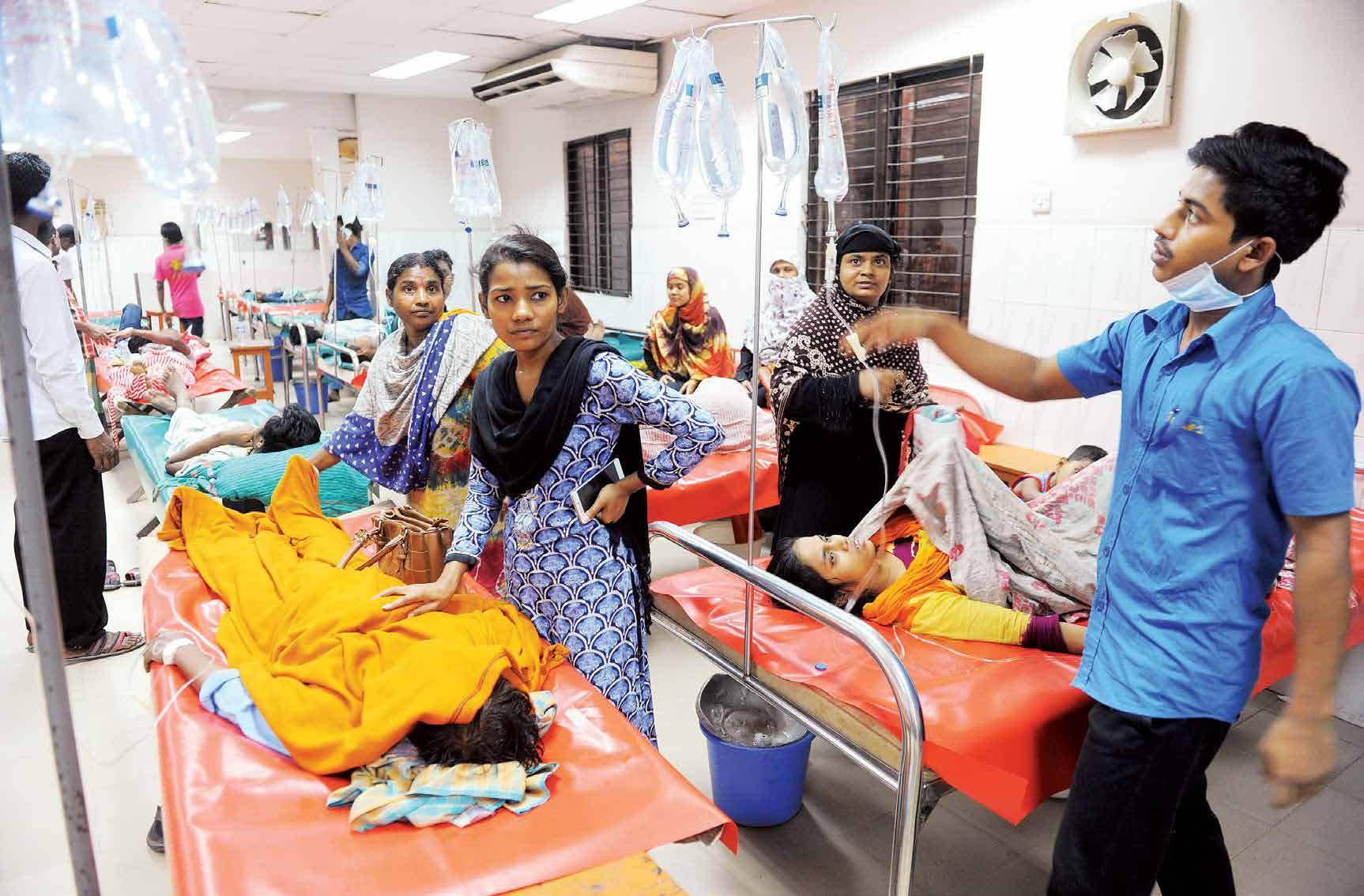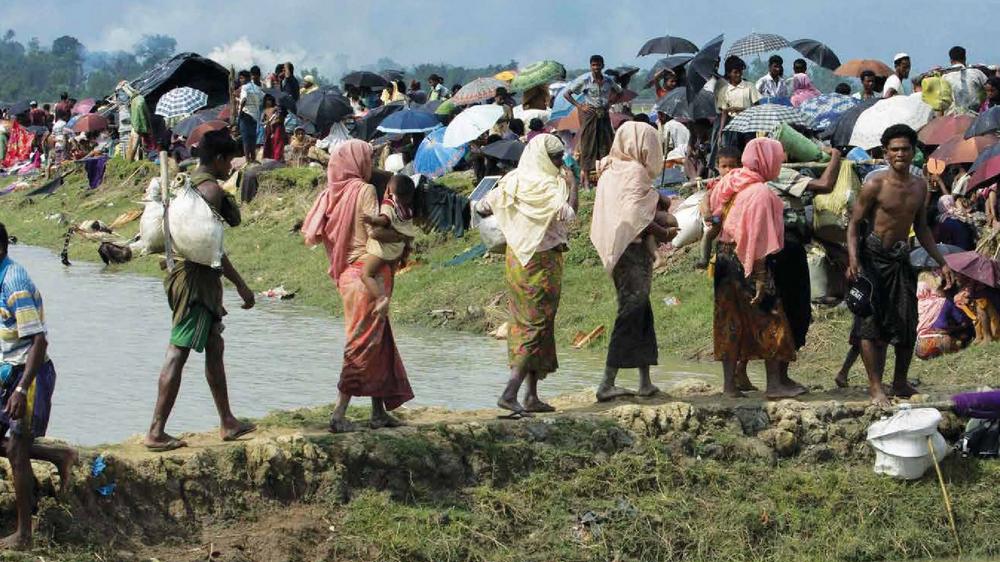Introduction
Family Planning by definition, is deciding the number and spacing of one’s children; through the use of contraception: such as abstinence, natural planning, or hormonal birth control.
On the other hand, Human Rights are the basic rights and freedoms that belong to every person in the world, from birth until death. These apply regardless of where a person is from, what s/he believes or how s/he chooses to live.
As early as 1968, i.e., fifty years ago, 157 government agreed that “Parents have a basic human right to determine freely and responsibly the number and spacing their children”; which was the outcome of much known as the Teheran Proclamation.

Embedded in this legislative language was a game-changing realization: Women and girls have the right to avoid the exhaustion, depletion and danger of too many pregnancies, too close together. Men and women have the right to choose when and how often to embrace parenthood – if at all. Every individual has the human right to determine the direction and scope of his or her future in this fundamental way.
Yet 50 years later, this right is under attack. In many places, there are efforts to limit education about family planning, to restrict the variety and availability of contraceptive methods, and to prevent women and youth from accessing contraceptives at all. In other places, this right is simply unrealized through lack of access to family planning information and services.
In fact, expanding access to family planning would save tens of thousands of lives every year by preventing unintended pregnancies, reducing the number of abortions, and lowering the incidence of death and disability related to complications of pregnancy and childbirth. Until family planning is a universally available choice, this human right will not be fully realized.

“Family planning saves lives” is a simple health prescription that resonates globally. A critical challenge is to ensure that policies and programs embrace the well-established benefits of enabling women to choose whether and when to become pregnant—actions and values that are integral to human rights. Policymakers should be asking, “What do human rights mean in relation to family planning, how we incorporate them into our country family planning and development plans, and why is that important?”
Human rights concepts are also critical to women’s empowerment and to advancing women’s agency, so that women can access the services they need, decide for themselves whether and when to become pregnant, and become agents of change for their communities and nations. Strengthening women’s agency will reduce incidents of rights violations; and as the FP2020 Rights and Empowerment Principles state, empowering and informing clients enables them to “know, understand, claim their rights, and…become pivotal partners in ensuring the realization of rights in future family planning and health development initiatives.”
Basic Principles of Human Rights
• Accountability: A rights-based approach requires the development of laws, administrative procedures, and practices and mechanisms to ensure the fulfillment of entitlements, as well as opportunities to address denials and violations. It also calls for the translation of universal standards into locally determined benchmarks for measuring progress and enhancing accountability.
• Nondiscrimination and Equality: A rights-based approach requires a particular focus on addressing discrimination and inequality, focusing on marginalized, disadvantaged, and excluded groups.
• Empowerment: Empowerment is the process by which people’s capabilities to demand and use their human rights grows. They are empowered to claim their rights rather than simply wait for policies, legislation, or the provision of services. The development process should be locally owned.
• Link to Human Rights Standards: Programming is informed by the recommendations of international human rights bodies and mechanisms.
Source: Gabrielle Berman, “Undertaking a Human Rights-Based Approach: A Guide for Basic Programming (Bangkok: UNESCO Bangkok, 2008), accessed at http://unesdoc. unesco.org/images/0017/001791/179186e.pdf, on 22 June, 2018.
As defined by the UN High Commissioner for Human Rights, states (governments) are also obligated to respect, protect, and fulfill human rights. These obligations are particularly relevant for family planning policy professionals and service providers. One example is confidentiality: Respecting that right means taking steps to ensure that no staff member breaches the confidentiality of clients. It means taking additional steps to make sure that third parties—for example, contractors or visitors—do not breach the confidentiality of clients.
Rights and Family Planning
The key human rights principles include participation, accountability, nondiscrimination, and empowerment. Adopting these principles within family planning programs will mean that:
- Communities and individuals will be able to participate in the planning of such services.
- Mechanisms will exist to ensure that such services are accountable to the communities they serve.
- Policymakers will seek the views of service users and regularly incorporate their views to improve programs.
- Services will not discriminate in their availability to different groups or the extent to which different groups can access services.
- Individual women and men will have agency to make decisions about whether and when to have children and which methods they select.
- Family planning decisions will be based on full, free, and informed choice.
Elements of Full, Free, and Informed Choice
These elements have been summarized as follows:
• Full Choice: Access to the widest range of methods possible from which to choose (short-acting, long-acting, permanent, hormonal, non-hormonal, client-controlled, provider-dependent).
• Free Choice: The decision whether or not to use family planning and what method to use, made voluntarily, without barriers or coercion.
• Informed Choice: A decision based on complete, accurate, unbiased information about all family planning options, including benefits, side effects and risks, and information about the correct use of the method chosen, as well as the risks of nonuse.
Source: Policy Brief, July 2015 by Karen Newmann and Charlotte Jacobs, Population Reference Bureau
While human rights standards and norms refer primarily to governments and their obligations under human rights treaties, they also provide an important rights-based lens for family planning service delivery goals, standards, and objectives. Policymakers play a valuable role by being champions for high-quality services and for resources— financial, human, and technical—needed to provide such services. They can also voice their opposition to quotas, or numerical or method-related incentives for service providers, or other inducements for potential family planning adoption that may compromise the extent to which contraceptive use is based on full, free, and informed choice. Examples include strong policy messages directing health service providers to:
- Encourage all clients to demand high-quality interactions; provide counseling that includes accurate, unbiased, and comprehensible information; and protect clients’ dignity, confidentiality, agency, and privacy.
- Refer clients to other sexual and reproductive health services where necessary, and train service providers to deliver such services.
- Ensure high-quality care through effective training, supervision, performance improvement, and remuneration practices that integrate rights-based values and skills before and during service, and recognize and reward providers for respecting clients and their rights.
- Ensure equitable and gender-sensitive service access for all, including disadvantaged, marginalized, discriminated against, and hard-to-reach populations, through various service models (including integrated, mobile, and/or youth friendly services) and effective referral to other voluntary sexual and reproductive health services.
- Routinely provide a wide choice of methods and ensure proper removal services for implants and IUDs, supported by sufficient supply, necessary equipment, and infrastructure.
- Establish and maintain effective monitoring and accountability systems with community input.
- Strengthen health management information systems and quality assurance/quality improvement processes
Conclusion
As already discussed so far, Family Planning had been and will remain as basic human right. Our understanding and actions were not in line with the thinking of rights perspective. When we are to ensure the rights both the rights holder and duty bearer have the roles and responsibilities to confirm. Especially critical actions from policymakers is a dying need at this moment. Back in 1968, through the Teheran Proclamation, the call for looking into Family Planning as a basic human rights strengthened through World Population Plan of Action adopted at the World Population Conference in Bucharest followed by the 1984 Conference in Mexico City. Which was furthered through the International Conference on Population and Development in Cairo.
Now time has come to take critical actions to start implementing Family Planning Program in the human rights perspective. Following action could be thought of.
Focus on the legal and policy framework for sexual and reproductive health and rights and ensure that respecting human rights is part of program design, implementation, monitoring, and evaluation.
Prioritize the funding of the demand side of family planning, as well as the supply side. Policymakers should actively encourage, research, and act on community views about family planning service needs and invest in information and education on sexual and reproductive health and rights that will enable individual women and men to demand high quality family planning services. Such actions are likely to vary widely in different settings and are best identified at the local level, where funding opportunities for the necessary research and community mobilization to challenge social and gender norms are often limited.
Invest in the contraceptive supply chain to guarantee that a wide range of safe and effective contraceptives are available.
Ensure an appropriate method mix, ideally including permanent, reversible, short-acting, and long-term contraceptive options to meet the needs of and support contraceptive use by both women and men.
Invest in research on the value-added dimensions of a rights-based approach—incorporating principles including participation, accountability, nondiscrimination, empowerment, and legality—enabling family planning programs to contribute directly to other international sustainable development priorities.
The outcome of such actions will lead to better quality family planning services reaching more women and men, and increased agency of individuals to make empowered choices for themselves about whether and when to have children.
References
- Family Planning 2020 (FP2020), “Rights and Empowerment Principles for Family Planning,” accessed at http://ec2-54-210-230-186.compute-1.amazonaws.com/wp-content/uploads/2014/ 12/FP2020_Statement_of_ Principles_FINAL.pdf , on June 22, 2018.
- http://wicandfamilyplanning.com/what-is-family-planning/
- http://www.un.org/en/documents/udhr
- http://www.who.int/pmnch/media/news/2010/20100322_d_shaw_oped/en/
- https://www.pop.org/family-planning-human-rights-and-the-population-establishment/
- https://www.samaritanmag.com/we-have-30-basic-human-rights-do-you-know-them
- https://www.unfpa.org/news/fifty-years-ago-it-became-official-family-planning-human-right
- Karen Newmann and Charlotte Jacobs, Policy Brief, July 2015, Population Reference Bureau, Washington DC, USA
- Once countries have ratified these treaties, they have to report regularly to UN Committees, which monitor the extent to which countries are implementing them. These Committees sometimes issue General Comments or Observations, which add content and meaning to specific articles in the UN Conventions.
- Proclamation, adopted unanimously at the UN International Conference on Human Rights, Teheran, 1968 (Article 16).
- Rhonda Smith et al., Family Planning Saves Lives, 4th ed. (Washington, DC: Population Reference Bureau, 2009).
- Steven W. Sinding, retired director general, International Planned Parenthood Federation, and former Director, USAID Office of Population and Reproductive Health, personal communication, June 2015.
- The FP2020 Rights and Empowerment Principles relate to 10 dimensions of family planning: agency and autonomy, availability, accessibility, quality, empowerment, equity and nondiscrimination, informed choice, transparency and accountability, voice, and participation.
- Universal Declaration of Human Rights, accessed at www.ohchr.org/EN/UDHR/Pages/ Language.aspx?LangID=eng , on June 23, 2018.
This article has been published in “বিশ্ব জনসংখ্যা দিবস ১১ জুলাই, ২০১৮”. All rights are reserved by the publisher.




